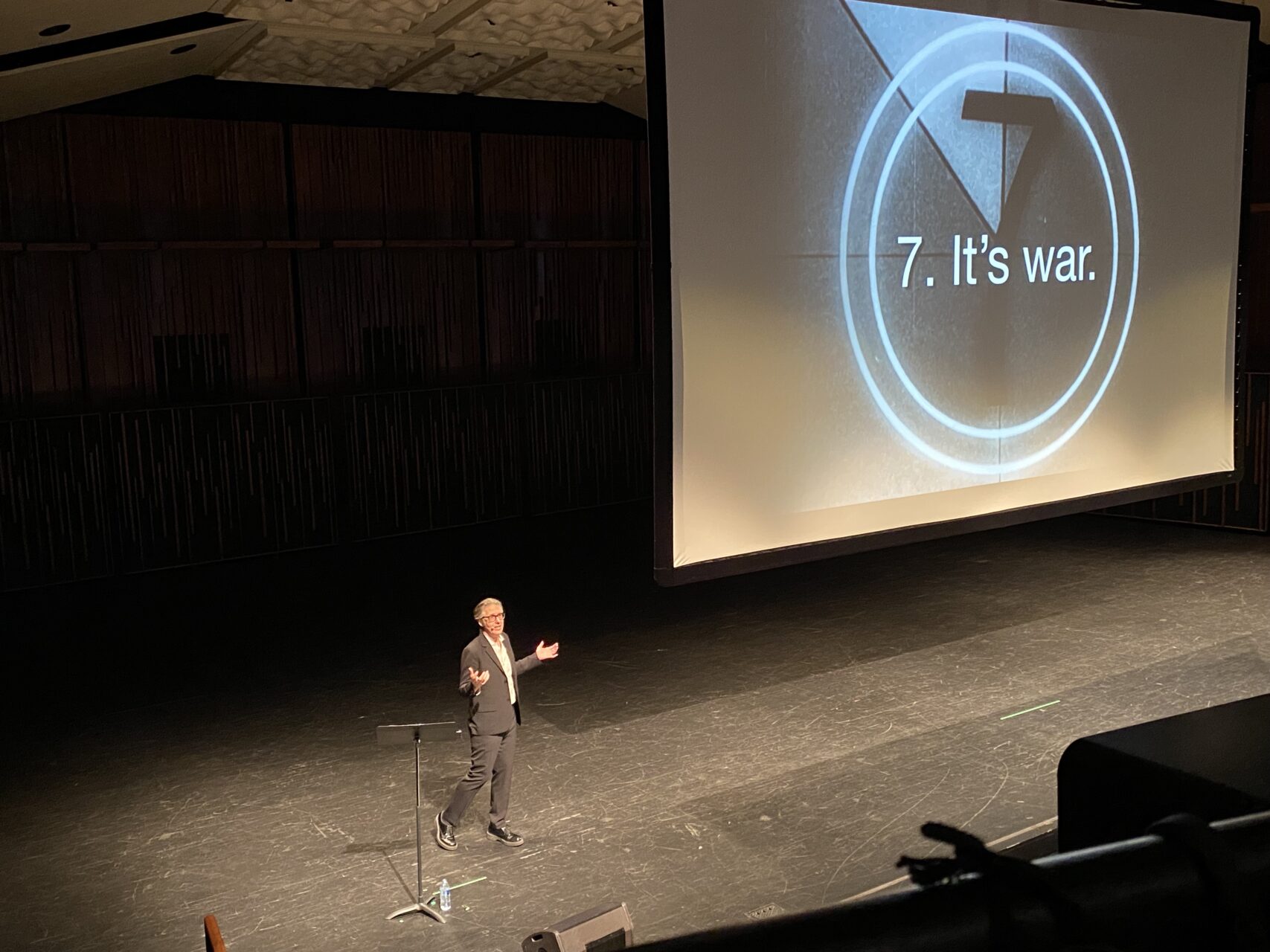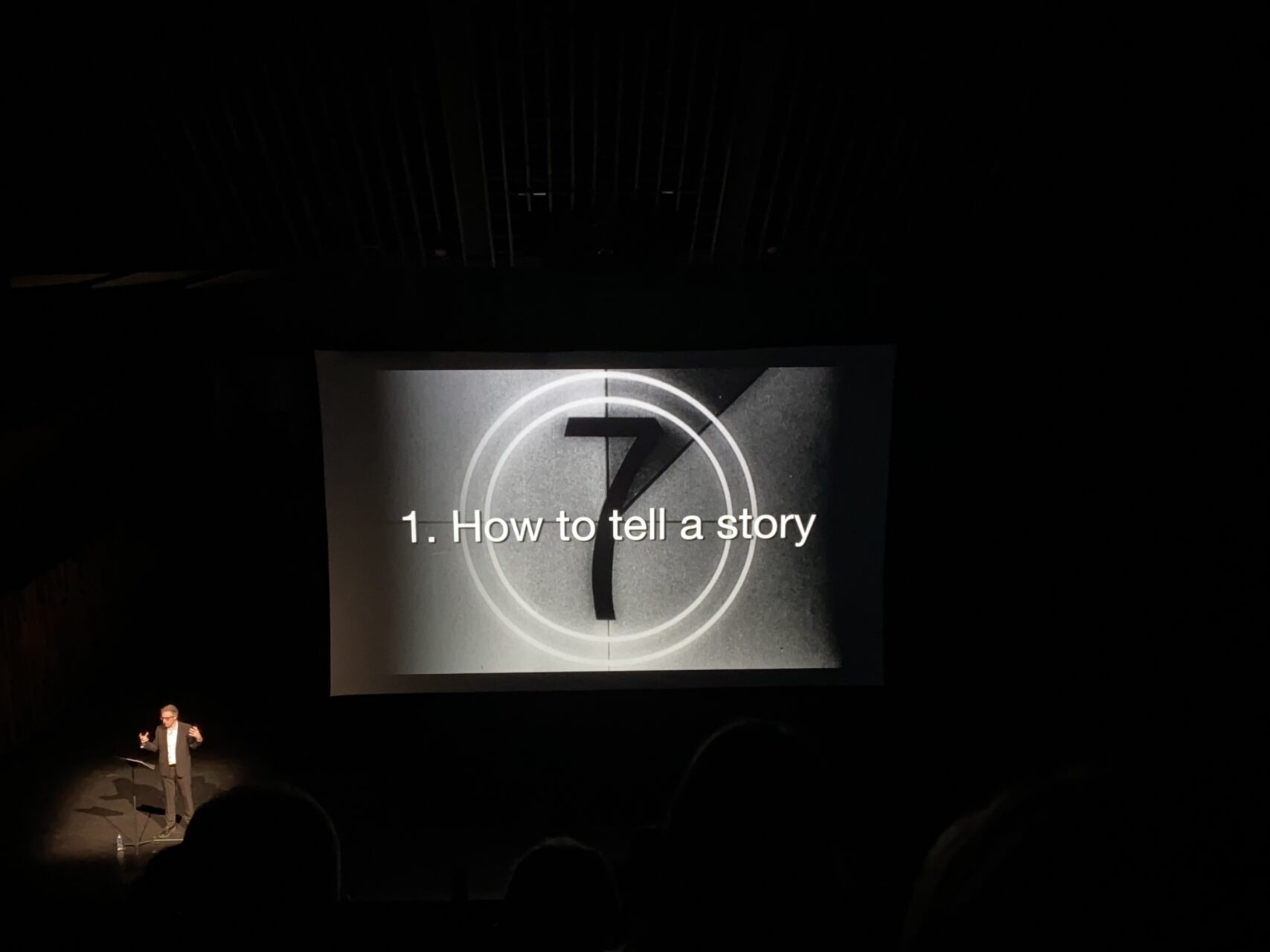
Ira Glass, radio personality and host of the award-winning podcast “This American Life,” addressed BYU on Saturday as part of the College of Fine Arts and Communications’ BRAVO! series. His presentation of “7 Things I’ve Learned” expounded upon key lessons of his career and an analysis of the craft of storytelling.
Glass began with an hour-long masterclass for select students prior to his main presentation. Delving into his narrative theory, Glass expressed his intrigue in telling the stories of everyday people. In telling these stories, he emphasized that once you have a plot and an idea, you have a story that people will be interested in.
A story, Glass explained, is really about motion: that forward movement propels the story forward and captivates an audience. Glass also encouraged writers to interview children.
“We’ve always done a ton of interviewing kids on the show because I love it”, Glass said. “They are constantly getting into situations where they feel the stakes are very high because it’s the first time they are doing things, and they’re right.”
Another reason Glass appreciates interviewing children is their open nature. In three minutes, he can get a child to share their life story with him, information that most grown adults are very hesitant to share.

Glass shared a story from one of his interviews that became his third lesson of his career. There was a little girl who wanted to be a dog when she was younger. While plenty of kids have a love for their four-legged friends, this particular little girl was obsessed. She began walking like a dog, eating like a dog and even leaving little presents in their backyard for her parents to clean up like their own pet dog would.
This little girl’s life changed when she grew older and learned that schools have mascots — human beings that walk about in animal costumes every day. This story and lesson he referred to as, “how to tell your kid will grow up to be the team mascot.”
Fourth, Glass taught that it’s normal to be bad at something before you’re good.
“The normal thing is to try for a long time and it’s not as good as your want it to be. And that’s normal!” Glass said. “You have to slug it out and be a soldier. You just have to get in there and start.”
Fifth, Glass illustrated the virtue in learning how to be invisible. To exemplify this he shared the remarkable story of celebrated street photographer Vivian Maier, whose prolific collection of over 150,000 photos were discovered after being auctioned off from the storage unit they had been residing in for 40 years.
Maier consciously chose not to share her work during her lifetime because her photography was something she did for herself.
“The making of something is the fun part, not the sharing of it. Anybody who makes things, first and foremost, is doing it for themselves,” Glass said.
On a similar note, Glass’s sixth lesson was to amuse yourself. Be out for your own fun, he encouraged. Amuse yourself and follow what is interesting to you as an individual.
Glass’s seventh and final point was this: It’s war. Using the chasm between red and blue America, he illustrated how it is difficult for people to agree on the most basic facts of anything now. Because of this polarization, journalists and other information sharers must be dedicated to sharing facts in a compassionate and emphatic way.
In typical Ira Glass fashion, he wanted to end the evening on a positive note. After acknowledging the diverse challenges plaguing America at this time, he concluded with a burst of optimism: “As awful as things are in our country, television has never been better.”




